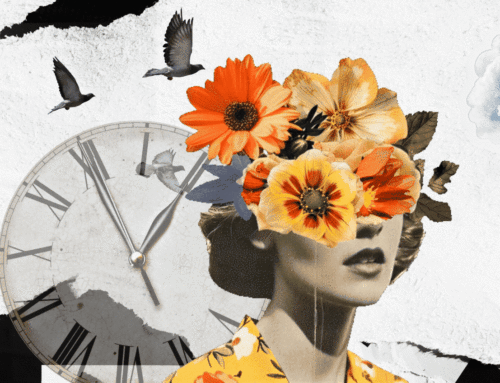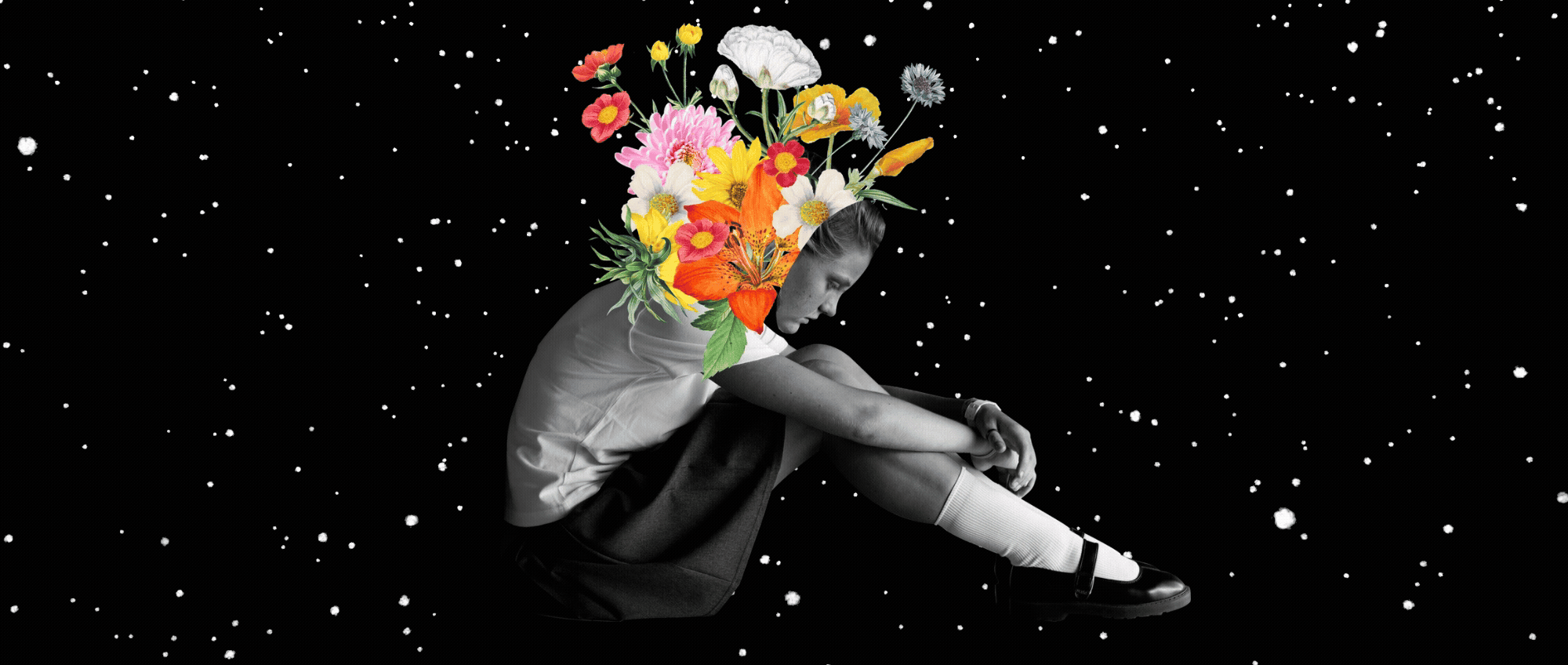When Winter Feels Heavy: Coping with Seasonal Affective Disorder in the Midwest
Winter in Kansas has a way of sneaking in quietly and then overstaying its welcome. The golden leaves fade, the evenings arrive earlier than we’re ready for, and suddenly it feels like the world has been painted in shades of gray. The air is cold, the daylight is short, and even the simplest tasks start to feel heavier than usual.
If you’ve ever noticed that your mood dips as the temperatures drop, you’re not imagining it. You may be experiencing Seasonal Affective Disorder (SAD) — a type of depression that follows a seasonal pattern, most commonly appearing during the late fall and winter months.
As a mental health therapist in Overland Park, Kansas, I often see clients this time of year who say things like, “I don’t know what’s wrong. I just feel off.” The truth is, winter affects more than just your calendar — it impacts your energy, motivation, and emotional well-being.
Why Seasonal Affective Disorder Happens
Seasonal Affective Disorder isn’t about disliking cold weather; it’s about how shorter days disrupt the body’s internal rhythms. When sunlight decreases, so does serotonin — the neurotransmitter that helps regulate mood. Your sleep cycle can also shift, leaving you tired, sluggish, and unmotivated.
In the Midwest, where days are often overcast, it’s easy to go entire weeks with minimal sunlight exposure. That lack of light can trigger feelings of sadness, irritability, and isolation — especially for those already managing anxiety or depression.
Signs You Might Be Experiencing SAD
- Persistent low mood or sadness
- Difficulty waking up or oversleeping
- Loss of interest in activities you normally enjoy
- Increased cravings for carbs and sugar
- Fatigue or loss of energy
- Withdrawal from social connections
Recognizing these symptoms is the first step toward taking back your winter.
Ways to Cope with Winter Blues
- Step into the Light
Try to spend at least 20 minutes outside during daylight hours. Morning walks are especially helpful for resetting your body’s circadian rhythm. If that’s not possible, consider using a light therapy lamp, which mimics natural sunlight and can boost mood and energy levels. - Move Gently but Often
Exercise doesn’t have to mean running marathons in the cold. Yoga, indoor cycling, or even stretching by a sunny window can help release endorphins and fight the fatigue that often comes with SAD. - Create Cozy Rituals
Winter doesn’t have to feel gloomy if you fill it with warmth and intention. Light a candle in the evening, read something that makes you laugh, or cook a meal that reminds you of comfort and connection. The goal is to create moments that bring you back to yourself. - Stay Connected
When the instinct is to hibernate, connection becomes even more important. Call a friend, join a local group, or schedule a therapy session. Talking about how you feel can remind you that you’re not alone in this — because truly, you’re not. - Consider Therapy
If your mood doesn’t lift as the season goes on, or you find yourself feeling more hopeless than usual, reaching out for professional help can make a difference. Therapy provides space to explore emotions, learn coping skills, and reconnect with purpose during the darker months.
Finding Light in the Midwest Winter
While winter in Kansas can feel endless, it doesn’t have to define your mood or your motivation. The seasons are temporary — both in weather and in life. And just as spring eventually softens the edges of winter, healing happens slowly, quietly, one intentional act at a time.
If you’re struggling this season, know that help is available.
As a licensed mental health therapist in Overland Park, Kansas, I work with clients across both Kansas and Missouri — in person and through online sessions — to manage anxiety, depression, and Seasonal Affective Disorder. Together, we can find ways to bring light back into your daily life.
When Winter Feels Heavy: Coping with Seasonal Affective Disorder in the Midwest
Winter in Kansas has a way of sneaking in quietly and then overstaying its welcome. The golden leaves fade, the evenings arrive earlier than we’re ready for, and suddenly it feels like the world has been painted in shades of gray. The air is cold, the daylight is short, and even the simplest tasks start to feel heavier than usual.
If you’ve ever noticed that your mood dips as the temperatures drop, you’re not imagining it. You may be experiencing Seasonal Affective Disorder (SAD) — a type of depression that follows a seasonal pattern, most commonly appearing during the late fall and winter months.
As a mental health therapist in Overland Park, Kansas, I often see clients this time of year who say things like, “I don’t know what’s wrong. I just feel off.” The truth is, winter affects more than just your calendar — it impacts your energy, motivation, and emotional well-being.
Why Seasonal Affective Disorder Happens
Seasonal Affective Disorder isn’t about disliking cold weather; it’s about how shorter days disrupt the body’s internal rhythms. When sunlight decreases, so does serotonin — the neurotransmitter that helps regulate mood. Your sleep cycle can also shift, leaving you tired, sluggish, and unmotivated.
In the Midwest, where days are often overcast, it’s easy to go entire weeks with minimal sunlight exposure. That lack of light can trigger feelings of sadness, irritability, and isolation — especially for those already managing anxiety or depression.
Signs You Might Be Experiencing SAD
- Persistent low mood or sadness
- Difficulty waking up or oversleeping
- Loss of interest in activities you normally enjoy
- Increased cravings for carbs and sugar
- Fatigue or loss of energy
- Withdrawal from social connections
Recognizing these symptoms is the first step toward taking back your winter.
Ways to Cope with Winter Blues
- Step into the Light
Try to spend at least 20 minutes outside during daylight hours. Morning walks are especially helpful for resetting your body’s circadian rhythm. If that’s not possible, consider using a light therapy lamp, which mimics natural sunlight and can boost mood and energy levels. - Move Gently but Often
Exercise doesn’t have to mean running marathons in the cold. Yoga, indoor cycling, or even stretching by a sunny window can help release endorphins and fight the fatigue that often comes with SAD. - Create Cozy Rituals
Winter doesn’t have to feel gloomy if you fill it with warmth and intention. Light a candle in the evening, read something that makes you laugh, or cook a meal that reminds you of comfort and connection. The goal is to create moments that bring you back to yourself. - Stay Connected
When the instinct is to hibernate, connection becomes even more important. Call a friend, join a local group, or schedule a therapy session. Talking about how you feel can remind you that you’re not alone in this — because truly, you’re not. - Consider Therapy
If your mood doesn’t lift as the season goes on, or you find yourself feeling more hopeless than usual, reaching out for professional help can make a difference. Therapy provides space to explore emotions, learn coping skills, and reconnect with purpose during the darker months.
Finding Light in the Midwest Winter
While winter in Kansas can feel endless, it doesn’t have to define your mood or your motivation. The seasons are temporary — both in weather and in life. And just as spring eventually softens the edges of winter, healing happens slowly, quietly, one intentional act at a time.
If you’re struggling this season, know that help is available.
As a licensed mental health therapist in Overland Park, Kansas, I work with clients across both Kansas and Missouri — in person and through online sessions — to manage anxiety, depression, and Seasonal Affective Disorder. Together, we can find ways to bring light back into your daily life.




